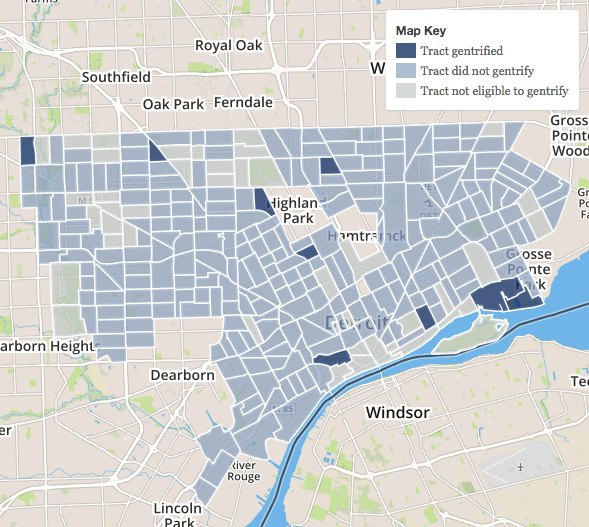The map from Governing (1990-2000 above) should be an important reminder that data isn’t everything. Especially when it comes to discussions around gentrification we cannot limit ourselves to the hard data collected in the census because gentrification is a social and political phenomenon.
Governing utilized three data points in order to classify “neighborhoods” as gentrifying or not:
- Median Home Value: Estimates are shown for owner-occupied housing units in 2013 dollars for recent data and 1999 dollars for 2000 Census data. Percentage changes in home values reflect adjustments for inflation.
- Bachelor’s Degrees: The share of the population age 25 and older who report holding bachelor’s degrees.
- Median Household Income: Values shown in 2013 dollars for recent data and 1999 dollars for 2000 Census data.
Indicators are important and these particular pieces of data do help to look at the issue of gentrification (rising prices, etc.), but the most important data to examine is the process of gentrification, not simply the outcome. What policies have contributed (i.e. redlining, reverse redlining), what political moves are making it more difficult (i.e. water shutoffs and foreclosure), and where are foundations, city government, and others focusing money for new investment.
I would argue that these maps don’t tell the story of gentrification at all, but rather the impact of further disinvestment of the neighborhoods where Detroit residents live. As census tracts/ neighborhoods lose population, those who are able to stay are more likely to have higher income, education, etc.
These maps and data again don’t account for the local nuance of issues with property and displacement:
“These numbers are meaningless. The area in Brightmoor is 70% vacant. How many data could you collect from that? So only 3 in every 10 houses is inhabited, there are no grocery stores, no banks, no high school, just burned out houses, vacant lots, potholed streets. Just another academic exercise that has no practical value for those of us who live there. There are no houses in that area.”
– Riet Schumack

